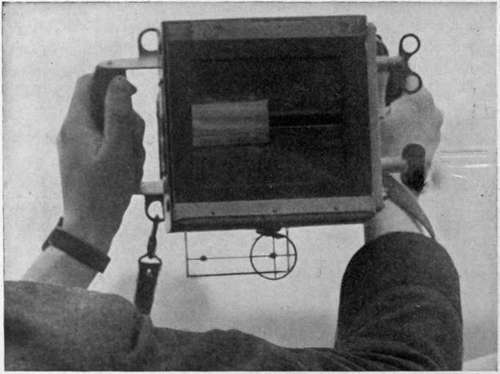Stereoscopic Aerial Cameras
Description
This section is from the book "Airplane Photography", by Herbert E. Ives. Also available from Amazon: Airplane photography.
Stereoscopic Aerial Cameras
Cameras for aerial stereoscopic photography need in no way differ in construction from those made for mapping or spotting, provided only they permit exposures to be made at short enough intervals. The addition of special sights, as already discussed, constitutes the only real difference between single view and stereoscopic aerial cameras. But even without such sights ordinary aerial cameras are applicable to stereo work by the usual procedure of determining the exposure spacing by time.
One scheme employed for taking low stereos, where the interval is only two or three seconds, is to mount two cameras in the plane, exposing them one after the other at the correct interval. Another method which has been tried with success is the use of a double focal-plane shutter in a single lens camera (Eig. 157). The two shutters are side by side, with ceptible elevation ii their slots parallel to the line of flight. To take a stereo negative we expose first the shutter nearer the tail of the plane, and then the other, after an interval which can be calculated from the speed and altitude, or, better, determined by a stereoscopic sight. The two views are thus obtained on a single plate. Prints from these negatives are transposed right and left, and, if the prints are viewed in an ordinary stereoscope, have to be cut apart and transposed for mounting, or else this may be done to the negatives.
The stereogram.

Fig. 157. - Aerial hand camera fitted with two complementary shutter slits and double sight, for stereoscopic photography.
In this connection attention may be drawn to an alternative method of viewing stereograms, which may be used on transposed prints—a method which needs no instrument, and so has sufficient advantage to even warrant mounting.
Continue to:
Tags
camera, lens, airplane, aerial, film, exposure, photography, maps, birdseye
